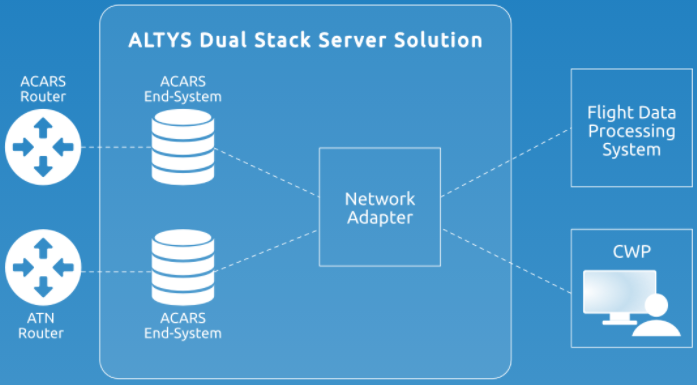
We provide ATN systems, including airborne ATN routers (Class 6), air-ground ATN routers (Class 5), ground-ground ATN routers (Class 4), and a dual stack data link server for ATC systems.Our COTS ATN systems support air-ground Air Traffic Services (ATS) and interface with legacy datalink systems.
■ Supported protocols: SNDCF, ES-IS, IDRP, TP4, ULCS, ASEs (CM, CPDLC, ADS-C), ACARS (A620/A622)
■ Interfaces: SNDCF over IP ; BATAP / MATIP Type B
■ Scalable architecture supporting over 10000 connections, up to 12 adjacencies
■ Provides support for multi-frequency (Model C/D compatible)
■ Redundant configuration
■ Compliant with European Regulations
■ Software Assurance Level AL5
ATN: the Aeronautical Telecommunications Network
ATN,or the Aeronautical Telecommunications Network, is a worldwide network infrastructure designed to support all types of aviation air-ground communications. ATN is currently used in Europe for CPDLC applications (ATN Baseline 1) and also for enhanced Air Traffic Services (ATN Baseline 2), including the Initial 4-Dimension Trajectory concept (enhanced route clearances; 4D trajectory negotiation with ATC).
The current ATN infrastructure relies on the OSI (Open Systems Interconnection) model. However, evolutions are ongoing to implement an IP-based network infrastructure supporting ATN applications: ATN/IPS (Internet Protocol Suite).
The IPS infrastructure will provide an air-ground network offering higher reliability and increased security for both ATC and AOC communications. ATN/IPS will offer a more secure air/ground link between aircraft and ground stations, and will improve the security of the end-to-end transmission of ATC and AOC applications.
The ATN/IPS targeted subnetwork will additionally offer improved datalink performance as well as higher bandwidth. IPS will utilize multiple air-ground links, including the legacy VDL Mode 2 link, Future SatCom (such as SwiftBroadband, Iris Service Evolution), LDACS, and AeroMACS. The implementation of the ATN/IPS network will serve as an enabler for several technological concepts such as 4D-Trajectory-based operations and performance-based operations.